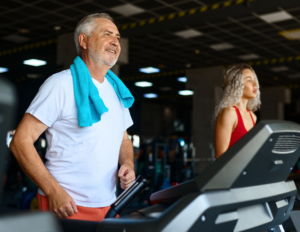When you love your body and take good care of it, it will love you back. Our overall health can be linked to how well we take care of ourselves both mentally and physically, but what does it mean to be healthy from head to toe? The answer to that question is unique for everyone, but there are several common factors of all-around healthy individuals.
Be active all-year long.
Staying mentally and physically active, all year long, is important and a habit ageless people seem to have in common, The connection between mental and physical health continues to be studied, and although there is still much to be learned — physical activity is the largest contributor to the indirect effects on our overall physical and mental health.
A tendency to be inactive for prolonged periods contributes to feelings of low-mood, sluggishness and other issues such as insomnia or back pain. In fact, prolonged periods of inactivity can lead to sitting disease — a cause of neck and back discomfort.
Staying active at any age can be as simple as adding daily stretching to your routine. Exercise is not only good for physical health, but it can also boost your mood, reduce stress and anxiety, and improve your mental health.
Exercise the mind and the body.
An active lifestyle does not neglect the mind. Social connections are crucial for good mental health. Avoid isolation by regularly connecting with friends and family or a community group. Reading, hobbies or other activities that stimulate the mind are not time-wasters, they are a vital part of keeping our minds in shape.
Manage stress levels.
Stress can negatively impact both your physical and mental health. Find healthy ways to manage stress, such as exercise or relaxation techniques. Mindfulness practices, such as meditation, deep breathing, or yoga, can help reduce stress, anxiety, and depression and improve your overall well-being.
Sleep and eat well.
Eat a balanced and nutritious diet. A healthy diet can help you maintain a healthy weight, reduce your risk of chronic diseases, and also boost your mood and energy levels. In addition, make sure to get enough restful sleep each night. Sleep is essential for overall good health, both physical and mental.
Listen to your aches and pains.
Overall healthy individuals are aware of what their bodies are telling them. If there is any indication that something is off, they listen. Whether it’s a change in sleep patterns, anxiety or other imbalances in our life and bodies, it’s best to not ignore them. Chronic conditions are otherwise often preventable if treated in their early stages.
Be patient but consistent.
Remember that everyone’s health journey is unique, and there is no “one size fits all” solution when it comes to health. Take the time to learn about what is best for you and be slow and steady in making changes. Incorporating healthy habits into your daily routine will help you live a healthier life.














